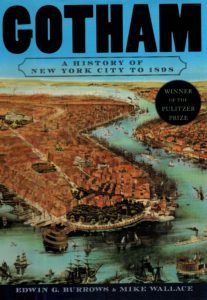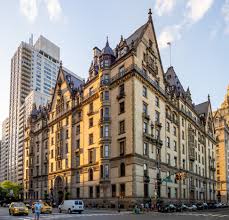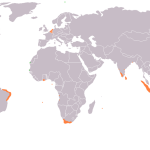Stephanie Schwartz ~ Double-Diaspora In The Literature And Film of Arab Jews
 Abstract
Abstract
Inspired by the contrapuntal and relational critiques of Edward Said and Ella Shohat, this thesis conducts a comparative analysis of the literature and film of Arab Jews in order to deconstruct discourses on Jewish identity that privilege the dichotomies of Israel-diaspora and Arab-Jew. Sami Michael’s novel Refuge, Naim Kattan’s memoir Farewell, Babylon, Karin Albou’s film Little Jerusalem and b.h. Yael’s video documentary Fresh Blood: a Consideration of Belonging reveal the complexities and interconnections of Sephardic, Mizrahi and Arab Jewish experiences across multiple geographies that are often silenced under dominant Eurocentric, Ashkenazi or Zionist interpretations of Jewish history.
Drawing from these texts, Jewish identity is explored through four philosophical themes: Jewish beginnings vs. origins, boundaries between Arab and Jew, the construction of Jewish identities in place and space, and, the concept of diaspora and the importance Jewish difference. As a double-diaspora, with the two poles of their identities seen as enemies in the ongoing conflict between Israel-Palestine, Arab Jews challenge the conception of a single Jewish nation, ethnicity, identity or culture. Jewishness can better be understood as a rhizome, a system without a centre and made of heterogeneous component, that is able to create, recreate and move through multiple territories, rather than ever settling in, or being confined to a single form that seeks to dominate over others. This dissertation contributes a unique theoretical reading of Jewish cultures in the plural, and includes an examination of lesser known Arab Jewish writing and experimental documentary in Canada in relation to Iraq, France and Israel.
Thesis University of Ottawa, 2012: https://ruor.uottawa.ca/Schwartz_Stephanie_2012_thesis.pdf
The Mellah: The Historical Jewish Quarter
Mellah is the Jewish quarter in Morocco. The first official Mellah in Morocco was established in Fez in 1438. The Mellah is like a city within a city. This video takes one back to the history, via postcards, when the Mellah was inhabited by Jews and how it is different today.
Avi Beker ~ The Forgotten Narrative: Jewish Refugees From Arab Countries
 Jewish Political Studies Review – Historically, there was an exchange of populations in the Middle East and the number of displaced Jews exceeds the number of Palestinian Arab refugees. Most of the Jews were expelled as a result of an open policy of anti-Semitic incitement and even ethnic cleansing. However, unlike the Arab refugees, the Jews who fled are a forgotten case because of a combination of international cynicism and domestic Israeli suppression of the subject. The Palestinians are the only group of refugees out of the more than one hundred million who were displaced after World War II who have a special UN agency that, according to its mandate, cannot but perpetuate their tragedy. An open debate about the exodus of the Jews is critical for countering the Palestinian demand for the “right of return” and will require a more objective scrutiny of the myths about the origins of the Arab- Israeli conflict.
Jewish Political Studies Review – Historically, there was an exchange of populations in the Middle East and the number of displaced Jews exceeds the number of Palestinian Arab refugees. Most of the Jews were expelled as a result of an open policy of anti-Semitic incitement and even ethnic cleansing. However, unlike the Arab refugees, the Jews who fled are a forgotten case because of a combination of international cynicism and domestic Israeli suppression of the subject. The Palestinians are the only group of refugees out of the more than one hundred million who were displaced after World War II who have a special UN agency that, according to its mandate, cannot but perpetuate their tragedy. An open debate about the exodus of the Jews is critical for countering the Palestinian demand for the “right of return” and will require a more objective scrutiny of the myths about the origins of the Arab- Israeli conflict.
Introduction
Why was the story of the Jewish refugees from Arab countries suppressed? How did it become a forgotten exodus?
Semha Alwaya, an attorney from San Francisco and former Jewish refugee from Iraq, wrote in March 2005 in the San Francisco Chronicle that the world is ignoring her story simply because of the “inconvenience for those who seek to blame Israel for all the problems in the Middle East.”1 As she notes, since 1949 the United Nations has passed more than a hundred resolutions on Palestinian refugees and not a single one on Jewish refugees from Arab countries. The UN makes a clear divide between the “right of return” of millions of refugees even into Israel proper (the pre-1967 borders) and the rights of these Jewish refugees.
Although they exceed the numbers of the Palestinian refugees, the Jews who fled are a forgotten case. Whereas the former are at the very heart of the peace process with a huge UN bureaucratic machinery dedicated to keeping them in the camps, the nine hundred thousand Jews who were forced out of Arab countries have not been refugees for many years. Most of them, about 650,000, went to Israel because it was the only country that would admit them. Most of them resided in tents that after several years were replaced by wooden cabins, and stayed in what were actually refugee camps for up to twelve years. They never received any aid or even attention from the UN Relief And Works Agency (UNRWA), the UN High Commissioner for Refugees, or any other international agency. Although their plight was raised almost every year at the UN by Israeli representatives, there was never any other reference to their case at the world body.
Only at the end of October 2003 was a bipartisan resolution (H. Con. Res. 311) submitted to the U.S. Congress that recognized the “Dual Middle East Refugee Problem.” It speaks of the forgotten exodus of nine hundred thousand Jews from Arab countries who “were forced to flee and in some cases brutally expelled amid coordinated violence and anti-Semitic incitement that amounted to ethnic cleansing.” Referring to the “population exchange” that took place in the Middle East, the resolution deplores the “cynical perpetuation of the Arab refugee crisis” and criticizes the “immense machinery of UNRWA” that only “increases violence through terror.” The resolution called on UNRWA to set up a program for resettling the Palestinian refugees.
Typically, the issue of the Jewish refugees was not on the agenda of the Israeli-Palestinian negotiations for a final settlement at Camp David in July 2000. The subject emerged only after the parties failed to reach an agreement on the issue of the Palestinian refugees. Only then did the Israelis raise the question of justice for the Jews from Arab countries.
In addition to the international constraints, there have been domestic political reasons for successive Israeli governments’ suppression of the subject. Many Israelis regarded the immigration and later integration of the Middle Eastern Jews into Israeli society as an important element in the Zionist ethos of the ingathering of exiles, and there was a reluctance to describe it in terms of a forced expulsion or, at best, an involuntary emigration. The Zionist leadership of the newborn state chose the romanticized code-name Magic Carpet to describe the immigration from Yemen, and the biblical title Operation Ezra and Nehemiah – they were Jewish leaders who returned to Jerusalem from Babylon to build the Second Temple – for the exodus of the Iraqi Jews.
Read more: https://www.jcpa.org/jpsr/jpsr-beker-f05.htm
Van Bach tot Glass: Paul Simon en serieuze muziek
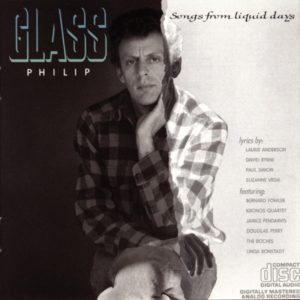 Op een aantal punten speelt klassieke muziek, althans serieuze muziek, een rol in het werk van Paul Simon. Veel Simon-fans zal het nummer American Tune op het album There goes Rhymin’ Simon (1973) bekend in de oren hebben geklonken. De echte kenners onder hen konden de melodie thuisbrengen als een deel uit de Mattheus Passie van Johan Sebastian Bach, en wel uit het choraal O, Haupt vol Blut und Wunden. Dat was op zich door Bach zelf weer geleend van Mein G’müt ist mir verwirret, een seculier, d.w.z. niet-kerkelijk, werk van Hans Leo Hassler von Roseneck (1564-1612).
Op een aantal punten speelt klassieke muziek, althans serieuze muziek, een rol in het werk van Paul Simon. Veel Simon-fans zal het nummer American Tune op het album There goes Rhymin’ Simon (1973) bekend in de oren hebben geklonken. De echte kenners onder hen konden de melodie thuisbrengen als een deel uit de Mattheus Passie van Johan Sebastian Bach, en wel uit het choraal O, Haupt vol Blut und Wunden. Dat was op zich door Bach zelf weer geleend van Mein G’müt ist mir verwirret, een seculier, d.w.z. niet-kerkelijk, werk van Hans Leo Hassler von Roseneck (1564-1612).
Over Bach als inspiratiebron heeft Simon zich, voor zover mij bekend, nooit uitgelaten.
In 1971 leverde Simon een tekst voor een compositie van Leonard Bernstein, vooral bekend van the West Side Story. Mass. A Theatre Piece for Singers, Players and Dancers is wat wij in revolutionairder tijden een beatmis noemden. Een opmerkelijk werk, deze katholieke mis door deze joodse componist.
Simons volledige bijdrage bestaat uit vier regels:
Half of the people are stoned
And the other half are waiting for the next election.
Half the people are drowned
And the other half are swimming in the wrong direction.
Bernstein bedankt hem met deze voetnoot:
This quatrain was a Christmas present from Paul Simon. Gratias. L.B.
(Dit kwatrijn was een Kerstgeschenk van Paul Simon. Merci. L.B.)
Changing opinion
Gradually we became aware of a hum in the room
An electrical hum in the room
It went mmmmmm
We followed it from corner to corner
We pressed out ears against the walls
We crossed diagonals and put our hands on the floor
It went mmmmmm
Sometimes it was a murmur
Sometimes it was a pulse
Sometimes it seemed to disappear
But then with a quarter-turn of the head
It would roll around the sofa
A nimbus humming cloud
Mmmmmm
Maybe it’s the hum of a calm refrigerator
Cooling on a big night
Maybe it’s the hum of our parents’ voices
Long ago in a soft light
Mmmmmm
Maybe it’s the hum of changing opinion
Or a foreign language in prayer
Maybe it’s the mantra of the walls and wiring
Deep breathing in soft air
Mmmmmm
Paul Simon, toch al niet bekend om de toegankelijkheid van zijn teksten, bereikte hiermee een nieuw hoogtepunt in diepgang.
De gezamenlijk inspanningen mondden uit in de cd Songs from Liquid Days (1986), zo genoemd naar de bijdrage van David Byrne. Glass had in 1983 al meegewerkt aan het Paul Simon album Hearts and bones. Hij schreef de coda (het afsluitend deel van een muziekstuk) waarmee de plaat eindigt.
Dat was overigens nog niet het einde van hun collaboratie. Op 23 mei 2007 werd aan Paul Simon de eerste Gershwin Prize for Popular Song uitgereikt. Tot de gastoptredens – van James Taylor en Miriam Makeba tot Art Garfunkel en Stevie Wonder – hoorde ook dat van Glass, die een solopiano versie van Sound of silence speelde.
En aan het booklet bij de 3cd-box Paul Simon 1964 – 1993 droeg Glass het essay Graceland and beyond bij. Daarin plaatst hij Simon, wellicht tot diens eigen verbazing, op één lijn met de belangrijkste Amerikaanse deuntjesmakers:
“For me, Paul Simon is, simply, one of the leading songwriters of modern times, responsible for more ‘standards’ than any other single songwriter of his generation. You have to go back to composers like Porter, Gershwin and Berlin to find comparable talent.”
(Voor mij is Paul Simon eenvoudigweg een van de meest vooraanstaande songwriters van de moderne tijd, verantwoordelijk voor meer ‘standards’ dan enige andere tekstschrijver-en-componist van zijn generatie. Je moet teruggaan tot componisten als Porter, Gershwin en Berlin om vergelijkbaar talent te vinden.)
Op de een of andere manier doet een vergelijking met Cole Porters Night and day, George Gershwins I got rhythm en Irving Berlins White Christmas, om maar een paar ‘standards’ te noemen, met Bridge over troubled water, The boxer en Duncan me sterk denken aan appels en peren.
—
Robert-Henk Zuidinga (1949) studeerde Nederlandse en Engelse Moderne Letterkunde aan de Universiteit van Amsterdam. Hij schrijft over literatuur, taal- en bij uitzondering – over film.
De drie delen Dit staat er bevatten de, volgens zijn eigen omschrijving, journalistieke nalatenschap van Zuidinga. De boeken zijn in eigen beheer uitgegeven. Belangstelling? Stuur een berichtje naar: info@rozenbergquarterly.com– wij sturen uw bericht door naar de auteur.
Dit staat er 1. Columns over taal en literatuur. Haarlem 2016. ISBN 9789492563040
Dit staat er II, Artikelen en interviews over literatuur. Haarlem 2017. ISBN 9789492563248
Dit staat er III. Bijnamen en Nederlied. Buitenlied en film, Haarlem 2019. ISBN 97894925636637
Egypt Reopens Eliyahu Hanavi Synagogue After Restoration
Egypt reopened the two and half centruty old Jewish synagogue, Eliyahu Hanavi after three years of restoration. It can accommodate 700 people; however, in 2018, the Jewish community in Alexandria counted for less than 10 members.
Gotham: bijnamen van New York
Sinds de terroristische aanvallen op het World Trade Center op 9 september 2001 is Ground Zero, meteen na Twin Towers, de meest gehoorde bijnaam in verband met New York. Ground Zero is van oorsprong een militaire term voor het centrum van een kernbomexplosie, ook hypocentrum geheten. De vergelijking met het desolate gebied rond het WTC ligt voor de hand. Toch werd het begrip ook al voor die tijd gebruikt: in 1997, bijvoorbeeld, verscheen het boek New Life at Ground Zero, over het herstel van achterstandswijken in New York in de jaren 80 en 90.
New York is een stad van veel bijnamen. The Big Apple is de bekendste, maar bij lange niet de oudste. Dat is Manhatta, de naam die de oorspronkelijke bewoners, de Algonkin Indianen, gaven aan het eiland dat later Manhattan ging heten. Het betekent ‘slanke vorm’. Ook de tweede naam van dat langwerpige eiland, Nieuw Amsterdam, kan als bijnaam gezien worden.
De aardigste naam voor New York is Gotham, geïntroduceerd door Washington Irving (1783- 1859) in zijn boek Salmagundi (1807). Gotham, een verbastering van Goats’ Town, is een Engels dorp onder Nottingham, waarvan de inwoners in de middeleeuwen de reputatie hadden zich gekker voor te doen dan ze waren. Veel van hun vrolijke verhalen werden geboekstaafd in de Merie Tales of the mad men of Gotam (1565). De sluwheid van de Gothammers sprak de bewoners van Manhattan voldoende aan om hun eigen stek naar dat Britse dorp te noemen.
Het Amerikaanse Gotham kreeg wereldwijde bekendheid als woonplaats van de stripfiguur Batman. Ook voor de thuishaven van een andere stripheld, het Metropolis van Superman, heeft New York model gestaan. Een lijvige geschiedenis van New York – 1.383 pagina’s – kreeg in 1999 de simpele titel Gotham.
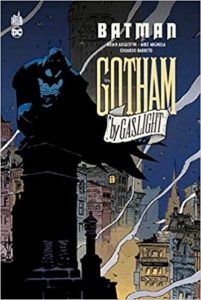 Over de oorsprong van the Big Apple bestaan verscheidene theorieën. De meest geaccepteerde is, dat het in de jaren 30 van de 19-de eeuw de naam van een nachtclub in Harlem was. Daar optreden was toen voor jazzmusici het hoogst bereikbare en gaandeweg werd onder jazzmusici naar New York verwezen als the Big Apple. In de jaren 70 werd het de officiële roepnaam, toen een promotiecampagne voor de stad op die naam gebaseerd werd.
Over de oorsprong van the Big Apple bestaan verscheidene theorieën. De meest geaccepteerde is, dat het in de jaren 30 van de 19-de eeuw de naam van een nachtclub in Harlem was. Daar optreden was toen voor jazzmusici het hoogst bereikbare en gaandeweg werd onder jazzmusici naar New York verwezen als the Big Apple. In de jaren 70 werd het de officiële roepnaam, toen een promotiecampagne voor de stad op die naam gebaseerd werd.
Big Apple bleek een productieve bijnaam: Jaffa, bekend om zijn sinaasappelen, heet in Israël the Big Orange en in de Disneytekenfilm Hercules (1997) vertrekt de hoofdpersoon naar Babylon, ofwel the Big Olive.
Dankzij Frank Sinatra en Lee Towers kreeg een regel uit de titelsong van de film New York, New York (1977) een eigen leven: the city that never sleeps. In een met de strijd tussen Amsterdam en Rotterdam vergelijkbare concurrentie afficheert Chicago zich, niet zonder sarcasme, als the city that works.
De Twin Towers zijn niet de enige gebouwen in New York die een bijnaam aan hun vorm ontlenen. Het ovale gebouw op de hoek van de 53-ste straat en Third Avenue heet niet voor niets the Lipstick Building, en de eerste wolkenkrabber op Manhattan, op het hoekpunt van Broadway en Fifth Avenue, dankt aan zijn driehoekige basis de naam the Flatiron: het
strijkijzer.
Maar bijnamen komen niet alleen voort uit een vorm. De Dakota, het appartementengebouw aan de westkant van Central Park, stond, toen het tussen 1880 en 1884 gebouwd werd, zó ver buiten de bewoonde wereld dat New Yorkers het gevoel hadden dat het in de staat Dakota, in het midwesten van Ameria, gesitueerd leek. Het prachtige Woolworth Building, kantoorkolos van de Woolworth-keten (een soort Hema), kreeg het etiket the Cathedral of Commerce.
Aan de oostkant van het park ligt the Museum Mile, het stuk Fifth Ave. met enkele van New Yorks belangrijkste musea: het Metropolitan, het Guggenheim en the Frick Collection. Aan dat deel van 5th Ave. huisden families als de Vanderbilts, de Astors en de Rockefellers.
Logisch dat dat stukje Millionaires’ Row genoemd werd. Het op deze hoogte gelegen deel van de Upper East Side is het Silk Stocking District. Het gedeelte ten oosten van de zijden kousen-wijk heet – met een verwijzing naar de roman van John Steinbeck – East of Eden, dat wil zeggen: buiten het paradijs.
De hel ligt tegenwoordig een stuk zuidelijker. Maar Ground zero wordt eveneens gebruikt in de betekenis van punt om iets weer van de grond af aan op te bouwen.
New York heeft, als een Nieuw Rotterdam, de mouwen opgestroopt.
Eerder gepubliceerd: Bijgenaamd, Achterpagina NRC-Handelsblad, 17 oktober 2001.
Robert-Henk Zuidinga (1949) studeerde Nederlandse en Engelse Moderne Letterkunde aan de Universiteit van Amsterdam. Hij schrijft over literatuur, taal- en bij uitzondering – over film.
De drie delen Dit staat er bevatten de, volgens zijn eigen omschrijving, journalistieke nalatenschap van Zuidinga. De boeken zijn in eigen beheer uitgegeven. Belangstelling? Stuur een berichtje naar: info@rozenbergquarterly.com– wij sturen uw bericht door naar de auteur.
Dit staat er 1. Columns over taal en literatuur. Haarlem 2016. ISBN 9789492563040
Dit staat er II, Artikelen en interviews over literatuur. Haarlem 2017. ISBN 9789492563248
Dit staat er III. Bijnamen en Nederlied. Buitenlied en film, Haarlem 2019. ISBN 97894925636637


